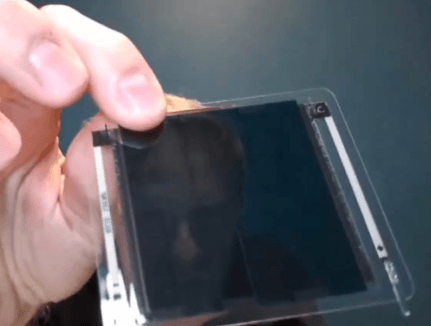Innovative Displays and Solar Cells for Tomorrow's Electronics
on
Segmented Displays: Ynvisible's Innovative Technology and Applications
In the first part of the show, Philip Holgersson discussed their segmented display technology. While segmented LCDs have been known for their low power consumption, Ynvisible's displays offer a unique advantage thanks to being able to maintain their state without being powered continuously. On the surface, this seems similar to the electrophoretic e-paper products a Kindle uses. But actually, these are electrochromic devices. Philip also clarified that the term "organic" in organic electrochromic materials means they are not harmful to the environment. Unlike traditional LCDs, Ynvisible's displays are thinner (about 250 microns) and do not require thick glass for support. Their solid-state materials can be printed directly on plastic film, making them flexible and suitable for curved surfaces. Regarding driving the displays, Philip explained that Ynvisible displays are more straightforward to control than LCDs and can work with most microcontrollers that have a high-impedance mode on their I/O pins. Unlike LCDs, they do not require complex AC signals.
Discussion on Epishine's Solar Cells and Their Applications
In the second part of the interview, Jonas from Epishine introduced their solar cell technology, particularly how they differ from traditional silicon-based solar cells. Conventional roof-based solar cells are mainly silicon-based and crystalline, offering about 20% power conversion efficiency. In contrast, Epishine's solar cells are designed for indoor applications and utilize printed electronics manufacturing processes. They perform well under indoor illumination conditions, providing microwatts per square centimeter of power output. The interview also touched on the customization options for solar cell dimensions and shapes. Epishine's flexible solar cells are shown to withstand regular flexing and have an encapsulation to protect against moisture and oxygen ingress. However, these cells are primarily recommended for indoor use due to limited efficiency in outdoor settings. Jonas also discussed how their solar cells can be integrated into products and suggested that customers consult with their product integration team for guidance on selecting the right solar cell size and type for their applications. Finally, he mentioned that Epishine's solar cells can be covered with various foils to customize their appearance. Such beautification does reduce light transmission and, consequently, must be offset against a lower power generation.

Advances in Roll-to-Roll Manufacturing for Flexible Electronics
In the roundtable discussion, Stuart, Philp, and Jonas focused on innovations in flexible electronics and solar cells. Both technologies utilize roll-to-roll manufacturing processes, offering new opportunities for product designers. Flexible displays and solar cells are highlighted for their potential to replace rigid counterparts, enabling curved and customizable designs. These flexible components are particularly suited for low-power applications and have the potential to eliminate the need for batteries in some instances. Both guests provided valuable insights into these emerging technologies, offering engineering solutions and advice for product integration.
For those interested in the full episode and further information, jump over to Elektor TV - Industry or watch below:

Hey - I have a great story...
Great! We'd love to hear it. Feel free to get in touch to learn how to share your news with us. We'll try to squeeze it in somewhere, whether a product launch, new technology, breakthrough, or event. Simply contact Stuart Cording via email, on Twitter, or LinkedIn.



Discussion (0 comments)